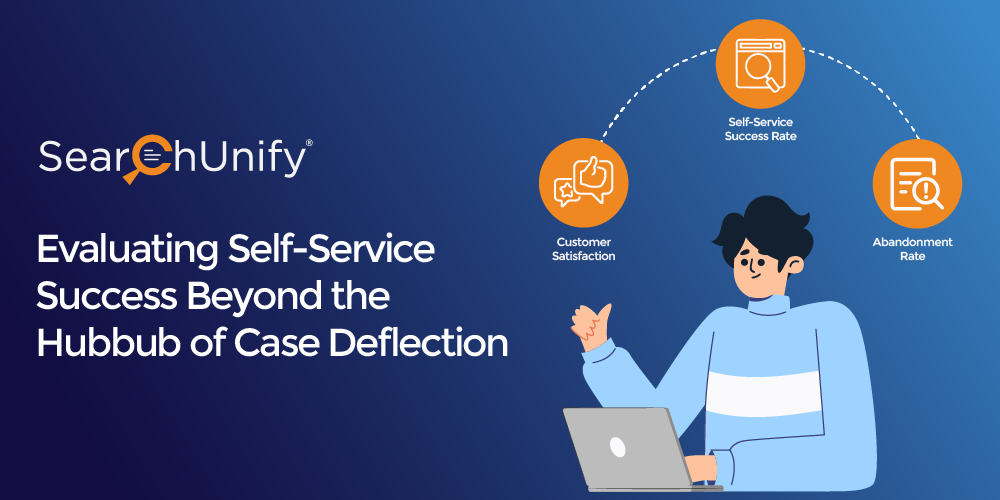
Most companies view contact centers as an Achilles’ heel or a necessary overhead. Accordingly, their improvement efforts focus on reducing costs and amplifying efficiency while overlooking the core principle of elevating the customer experience.
So, to curb unwarranted expenditure, customers are forced to bend their ways. Their service requests get routed to lower-cost digital channels garbed as faster mediums. This change does more harm than good and results in subpar CX besides affecting the brand value.
This report states 43% of consumers used a self-help channel to resolve an issue, but only 31% were satisfied with the solution.
So why is every company obsessed with deflection and how did it become so invasive? More importantly, how can enterprises turn the tide of deflection to support quality and timeliness? Let’s find out!
Moving Beyond Self-Service Deflection
Customer care advocates are concerned that deflecting assisted support interactions is associated with reluctance to address customer issues — a message you would not want to send when trying to appease them. That is why it’s time for a definitive paradigm shift in the way organizations approach self-service.
Instead of taking the easier path to cost-cutting, brands must offer superior alternatives that are not only efficient but also meet the customers’ needs; preferably in the channel best suited for the engagement.
Organizations can include multiple paths to self-serve like FAQs, communities, or virtual assistants for encouraging adoption by the widest array of customers. This way, they don’t come off as brands avoiding interaction but simply offering various mediums to find a solution and customers get to decide how and where they get help.
The New-Age Self-Service Metrics
Strengthening customer relationships via self-service portals is how you can position your contact center as a differentiating factor in your customers’ experience. Given below are the metrics you need to track to achieve this feat while channeling efforts and resources in the most effective ways:
1. Customer Satisfaction
According to Gartner, 96% of consumers that reported having high-effort experiences were more disloyal as compared to 9% of customers with a low-effort experience.
Self-service empowers customers to find solutions on their own, within their own time frames. But the last thing you’d want is your fancy self-service avenues to languish like a poorly tended garden. That’s where measuring customer satisfaction becomes necessary.
Customer satisfaction and net promoter score (NPS) surveys, recording direct feedback, etc., are sure-fire ways to quantify your self-service efforts with a fine-tooth comb and ascertain customer delight.
For more accurate results, it is recommended to take a survey right after an interaction on your self-service channel. The questions can revolve around UI, ease of finding information, quality of self-help content, and the likeliness of recommending the portal to someone else.

2. Self-Service Success Rate
The metric is the ratio of queries resolved by customers against the total number of issues reported at the contact center. Simply put, it delineates how often customers self-solve their issues or carry on a transaction unassisted in lieu of contacting a live agent.
For instance, if a user forgets the password, they can simply click ‘forgot password’ and handle it themselves. Additionally, self-service success rate also takes into account instances where KB articles successfully lead the users to an apt resolution.
3. Abandonment Rate
63% of customers are annoyed by the search field in particular. Without accurate search, they have a hard time finding the content they need.
Self-service rates alone do not evince the success of your contact center. They’re just one piece of a bigger puzzle. If a user abandones your website or self-help portal without an effective solution, then your CSAT score is bound to plunge.
The abandonment rate indicates how your self-service portal has fallen short. And it could be due to any one or all of the following reasons:
- The required content doesn’t exist
- The content is not relevant enough
- The content is present but is not easily findable
The Bottomline
Err on the side of caution and wield technology for better service – not just for cutting costs. SearchUnify offers forward-thinking support tools that are both effective and efficacious. Additionally, embedding it in your self-service portal can obliterate hindrances like irrelevant content, poor findability, and content gaps. Wondering how? Or simply want to build a robust self-service model? Then request a demo today!














